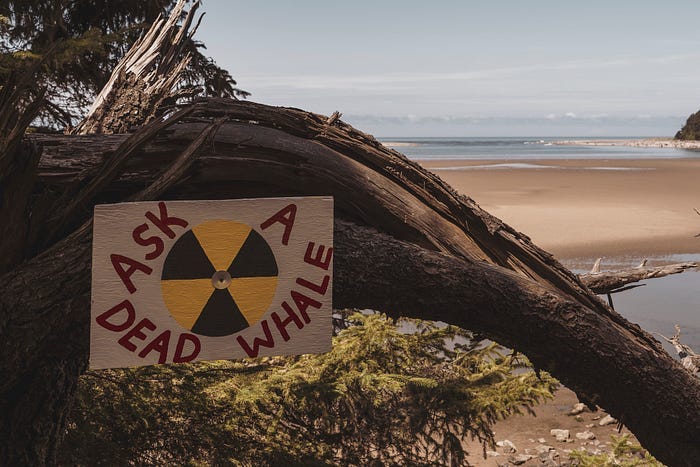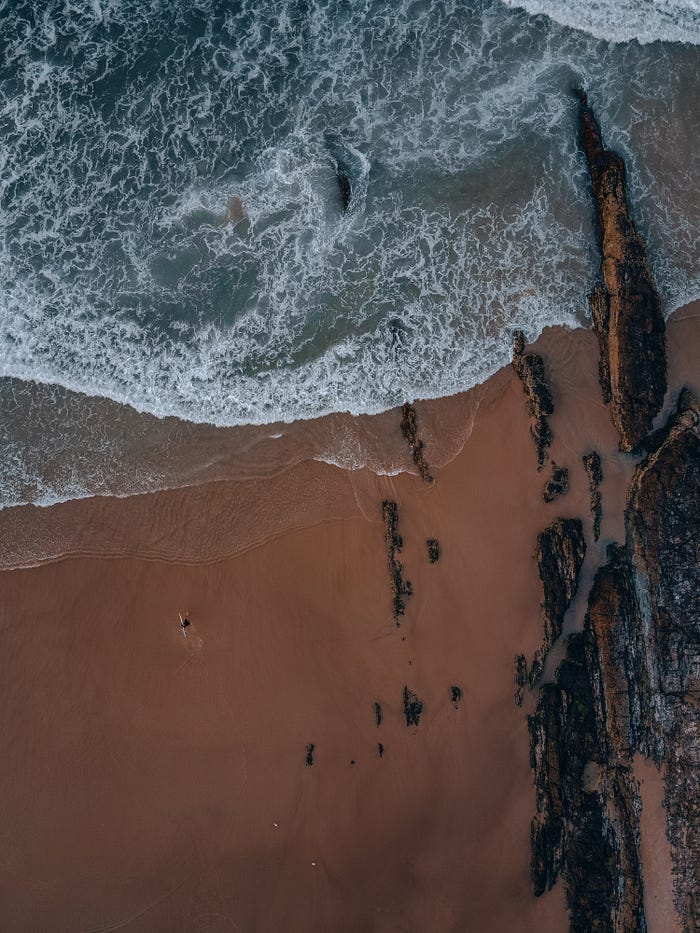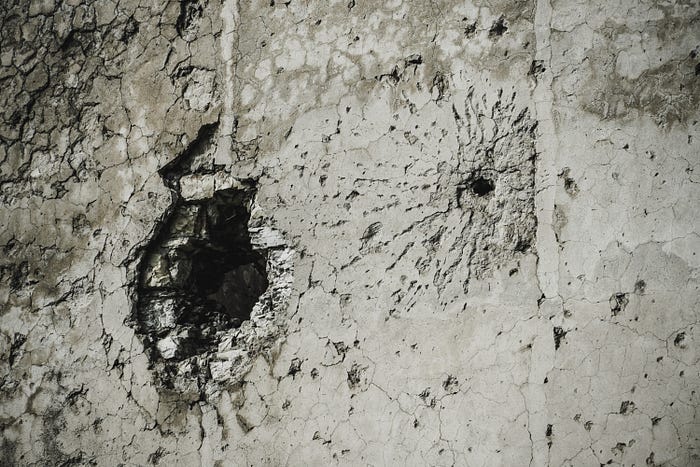The Runit Island Tomb: Radioactive Climate Change
Hanford is not the only atomic time bomb

Writing about the Hanford Site was something of a mood killer.
Researching and studying the past can be harrowing, especially when you dip your toes into the more modern advances in technology. The history of radiation and how it has been studied is particularly alarming.
With how staggeringly dangerous it is, it’s so tempting to assume that it’s always been treated with gravitas and the appropriate level of caution.
Sadly, people are only human. And humans can be really, really bad at following safety regulations. If you’ve ever laughed at signs like “Don’t drink the acid,” in workshops, or wondered at warnings not to store explosives near fire, you’re not alone.
It seems ridiculous that somebody would bother to put up a warning like that. Of course nobody is going to drink a cup of acid — that’s plain common sense!
But here’s the thing — those signs only exist because, at one point, somebody was stupid enough to do exactly that.
Remember those Hanford workers who decided it was a good idea to dump radioactive waste directly into the dirt outside the building?
Yeah. Warning signs are a good idea when you’re dealing with anything that can literally unravel strands of your DNA. And if you see big, hard-to-miss warning signs like that, you should probably pay attention and take precautions.
All of the safety warnings and strict rules in the world have been written with a pen inked with somebody’s blood.
The same can be said for the warning signs posted around the massive concrete dome on Runit Island.

The Republic of the Marshall Islands is a country comprised of roughly 1,200 small islands scattered in the central Pacific Ocean.
Situated to the east of Micronesia, and to the north of New Zealand, the Islands are known for their beautiful tropical climate and lovely coral reefs.
Marshall Islanders have a distinct culture and language. They value hospitality, cooperation, and strong family ties. Like many cultures across the world, their traditions have been heavily influenced by Christian missionaries over the past couple of centuries. The current population of the islands is a little under 40,000.
Unfortunately, after the end of World War II and the capture of the Marshall Islands by the Japanese who were using them as a base of operations, the United States found the remote location and sparse population to be the perfect testing site.
And not just any kind of tests were conducted on the islands — they were designated as a nuclear testing ground.
The scars of those tests persist to this day. While research was limited to two specific atolls, the fallout proved impossible to contain. The whole of the island chain was swiftly contaminated, with many small islands being entirely vaporised or left uninhabitable.
As often happens when a colonizing force moves into an area, the indigenous population was completely displaced. The local Marshallese people were essentially evicted from their ancestral islands and resettled multiple times, attempting to dodge the worst of the radiation as directed by the American researchers on-site.
Many of them were forced to leave their land permanently, as the islands where they used to live are about as toxic as Pripyat.
The Marshall Islanders even filed a complaint with the United Nations to ask for their help in preventing further tests. That was in 1954. The bombs continued falling for 4 more years.
Between 1946 and 1958, the United States ran about 67 trials, which included the detonation of 23 nuclear bombs near the Bikini Atoll, and a further 44 thermonuclear tests in the nearby Enewetak Atoll.
The Enewetak Atoll is where Runit Island is located.

Like most of the islands in the Republic, Runit Island is remarkably shallow.
Comprised of mostly coral limestone, the islands are actually formed by the lip of underwater volcanic craters. The peak of the submerged cliff faces barely crest the surface of the waves.
This makes them incredibly vulnerable to climate change — particularly the steady rise of sea levels around the world. In effect, as the world heats up, the Marshall Islands are sinking. The land upon which the Marshall Islanders make their homes is disappearing, little by little.
For Runit Island, the site where some of the heaviest contamination is currently contained, this poses a very serious problem.
When cleanup efforts in the Atoll were finally begun, Runit Island was chosen as a dumping ground. Contaminated sand, debris, and equipment were piled up in a large, excavated pit, carted in by soldiers wearing minimal safety gear.
Once the pit was full of waste, it was covered over by a large containment dome made of thick concrete. Concrete makes for a decent cap for nuclear waste, as radiation actually struggles to penetrate it. As a temporary stopgap, it’s not terrible.
The key word there is temporary. Like most building materials, concrete is not invulnerable to damage.

As the sea levels slowly rise, the low sprawl of Runit Island means that the dome — which the locals refer to as The Tomb — is now exposed to the lapping ocean waves.
Edges of the dome are beginning to crumble, and the soil surrounding it is starting to heat up.
With birth defects, cancer, and other illnesses related to radiation already prevalent in the Republic, the local Islanders are contending with a slowly rising dread at the thought of another nuclear disaster.
They’re caught on the tracks, watching a runaway train approaching from afar and unable to do anything to stop it.
The United States government, to this day, insists that the islands are safe for the inhabitants and that contamination is minimal.
The local people of the Republic, those who actually live there, say otherwise. The legacy of the nuclear testing isn’t theirs, but the maintenance and health impacts of the Tomb have been on their shoulders since it was constructed.
The Tomb is a ticking time bomb, slowly breaking down, and just waiting for a bad storm to crack it open like a crab shell beneath a gull’s beak.
The Islanders have sent appeal after appeal, petition after petition, begging for aid. The Tomb is already leaking, rates of cancer are on the rise again, and the government responsible has washed its hands of their plight.
And now, with the Trump administration shrugging their shoulders at environmental catastrophes, turning their backs on their own people — let alone the people of other nations, whom they seem to regard as less than human — and cutting any funding for humanitarian aid, the cause of the Marshall Island people seems hopeless.
That the local population is in the line of fire would be horrific enough on its own. But as we all know, radiation spreads when it breaches containment.
When the Runit Island Tomb cracks open, the toxic waste within will be exposed to the wind and waters, poisoning the sand and dust which will be carried by the ocean waves, unfurling a banner of sickness and dread all around the world as it’s carried on the current.
Our already-depleted oceans will be bloodied yet again.
This problem, created by the United States, will impact the entire world.
Just like the Hanford Site, this is a ticking time bomb that we can’t afford to ignore.
Solidarity wins.

